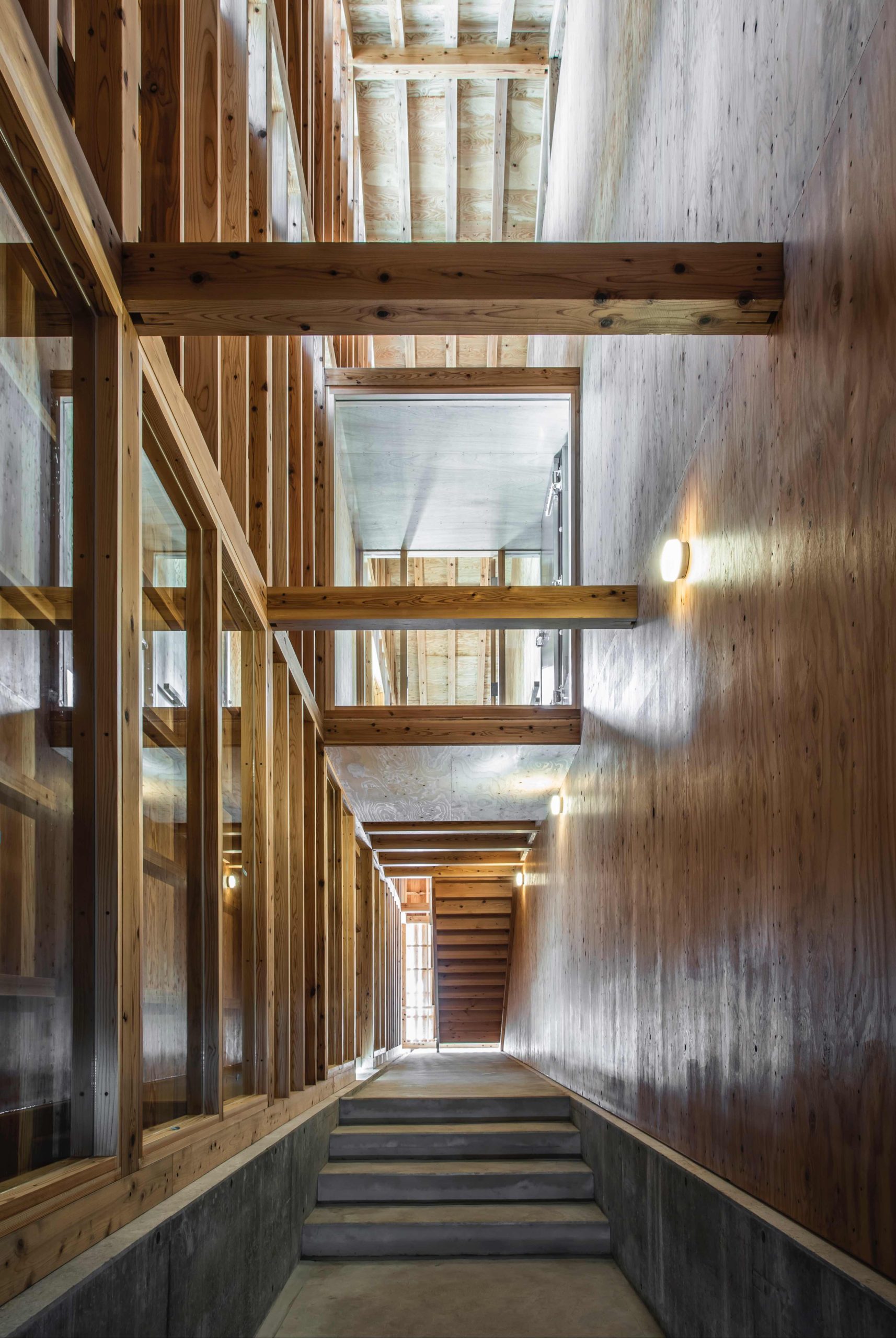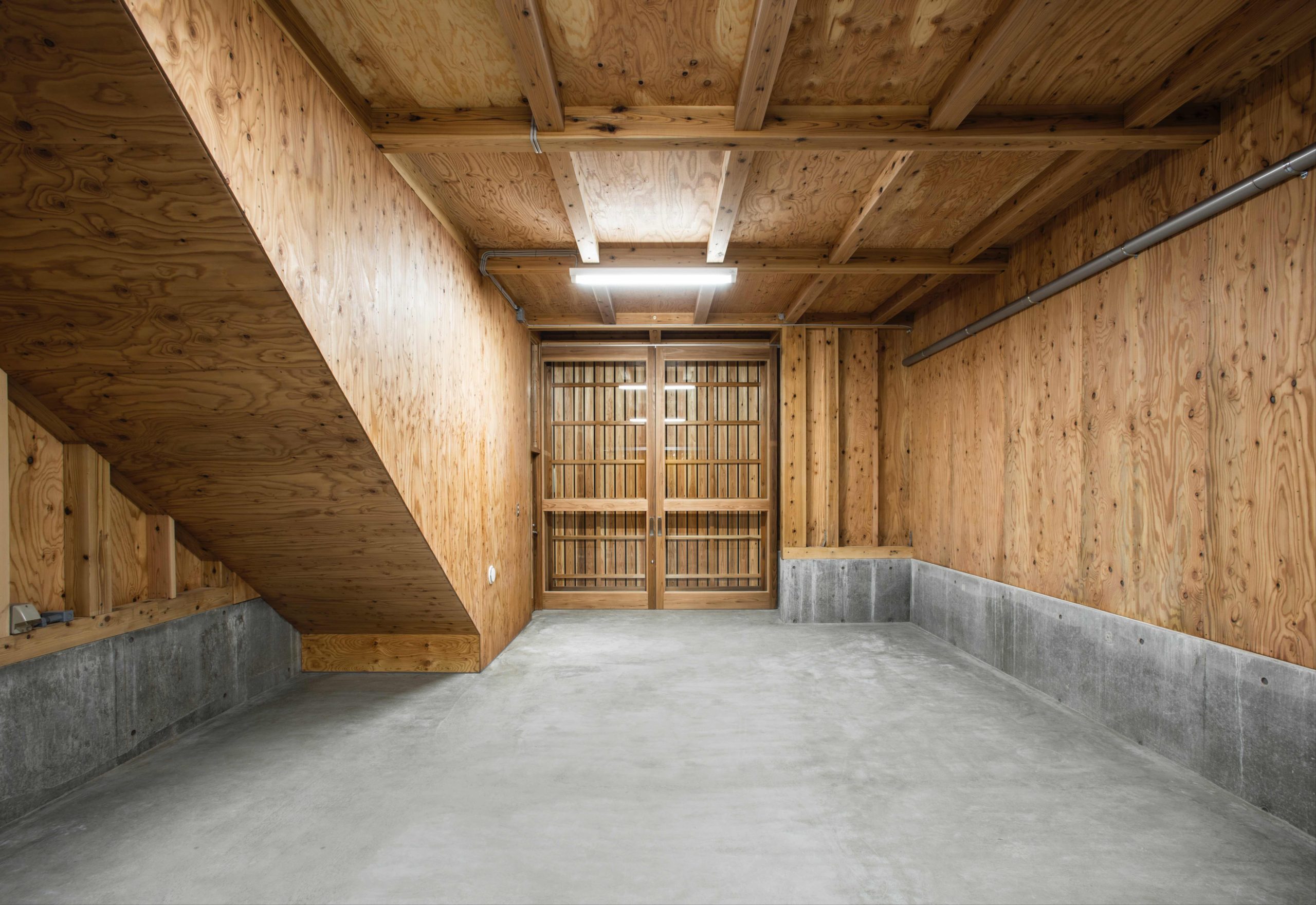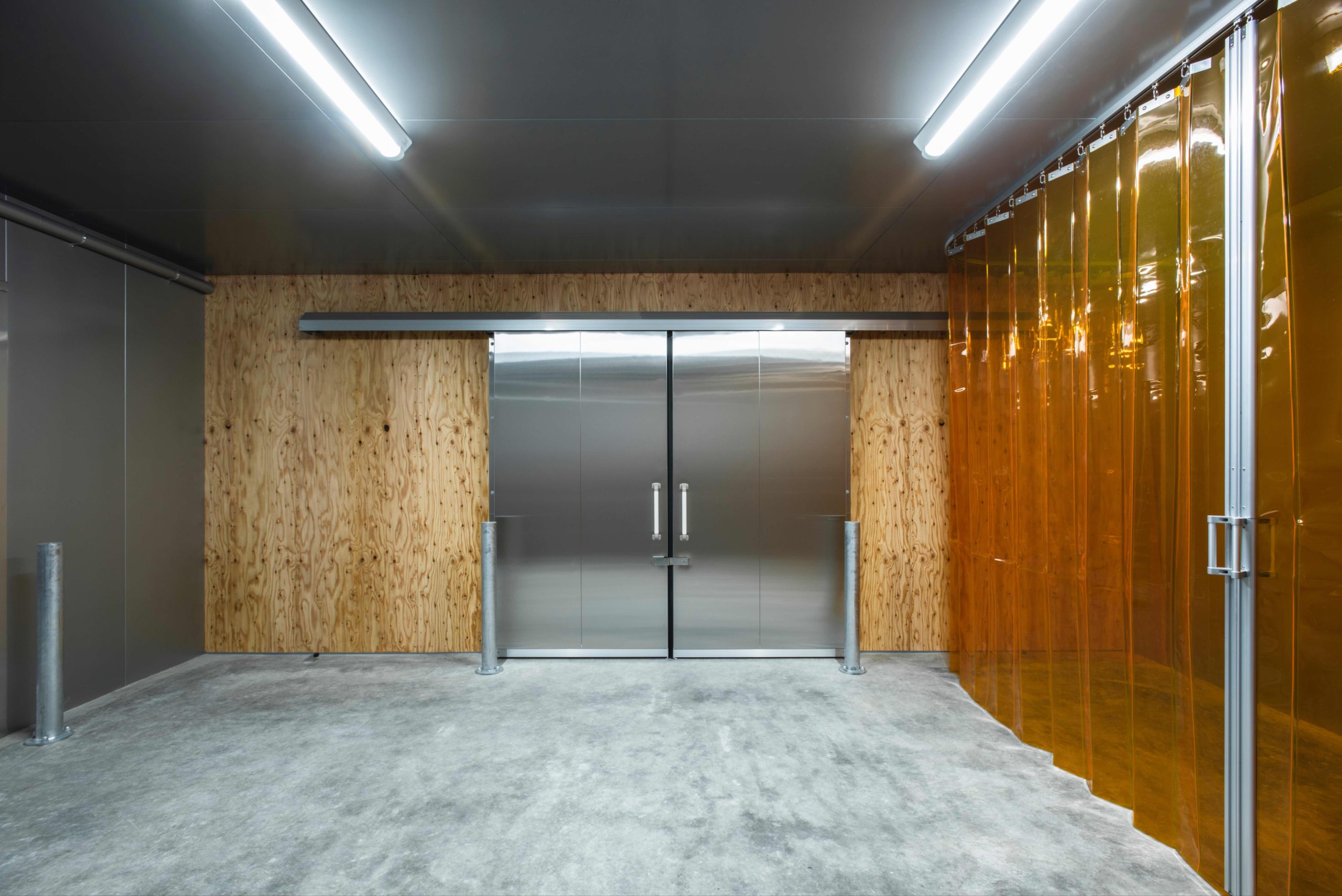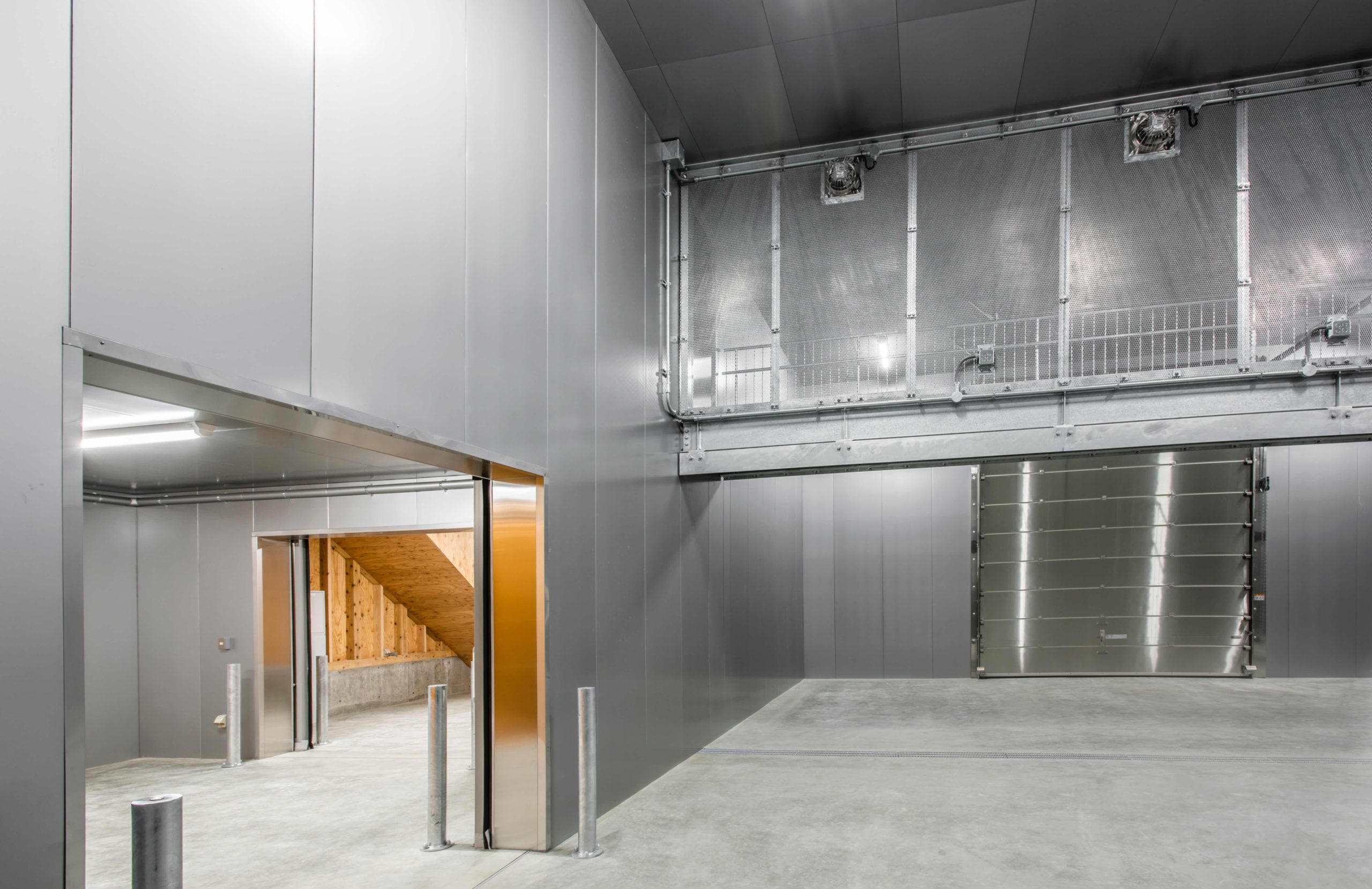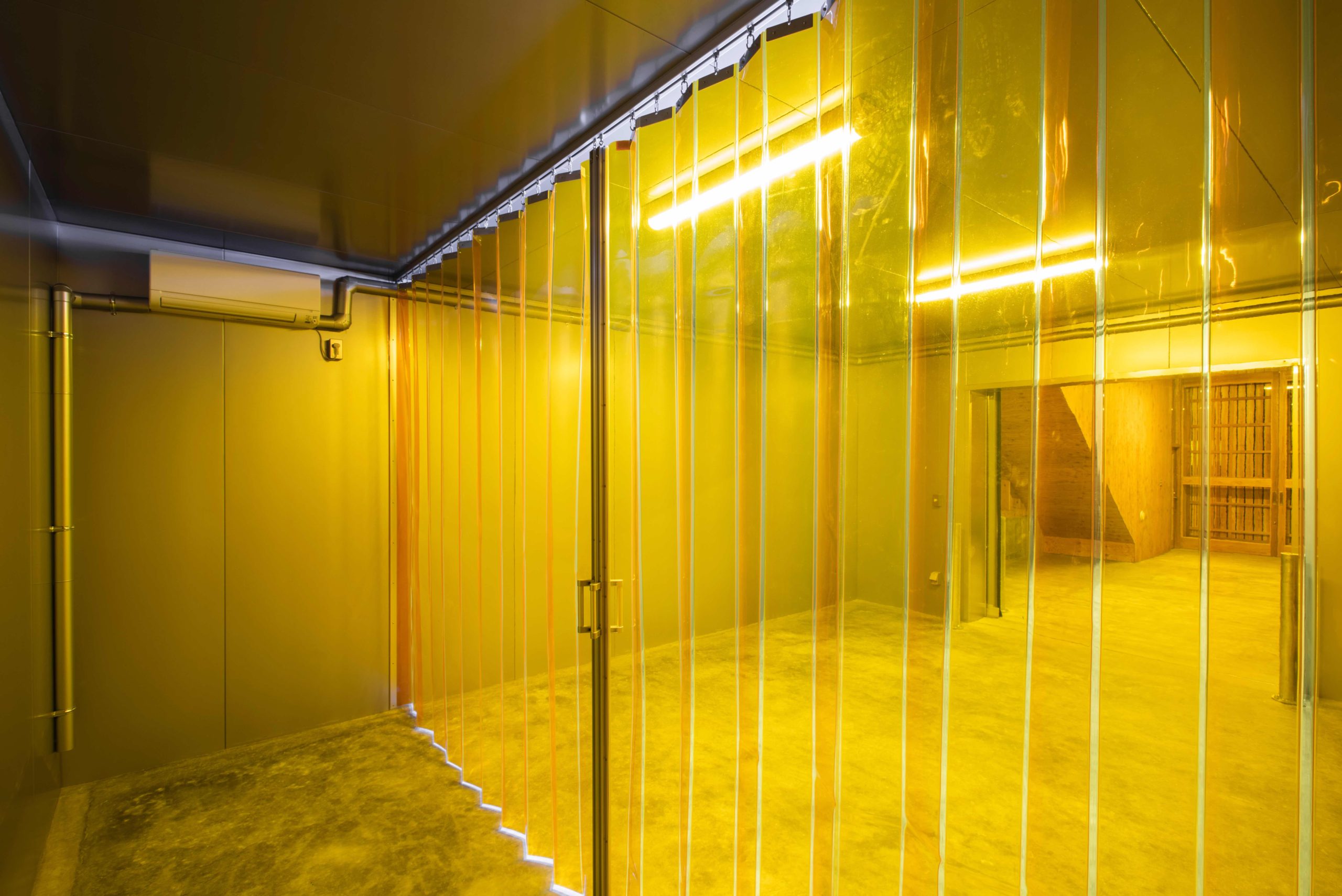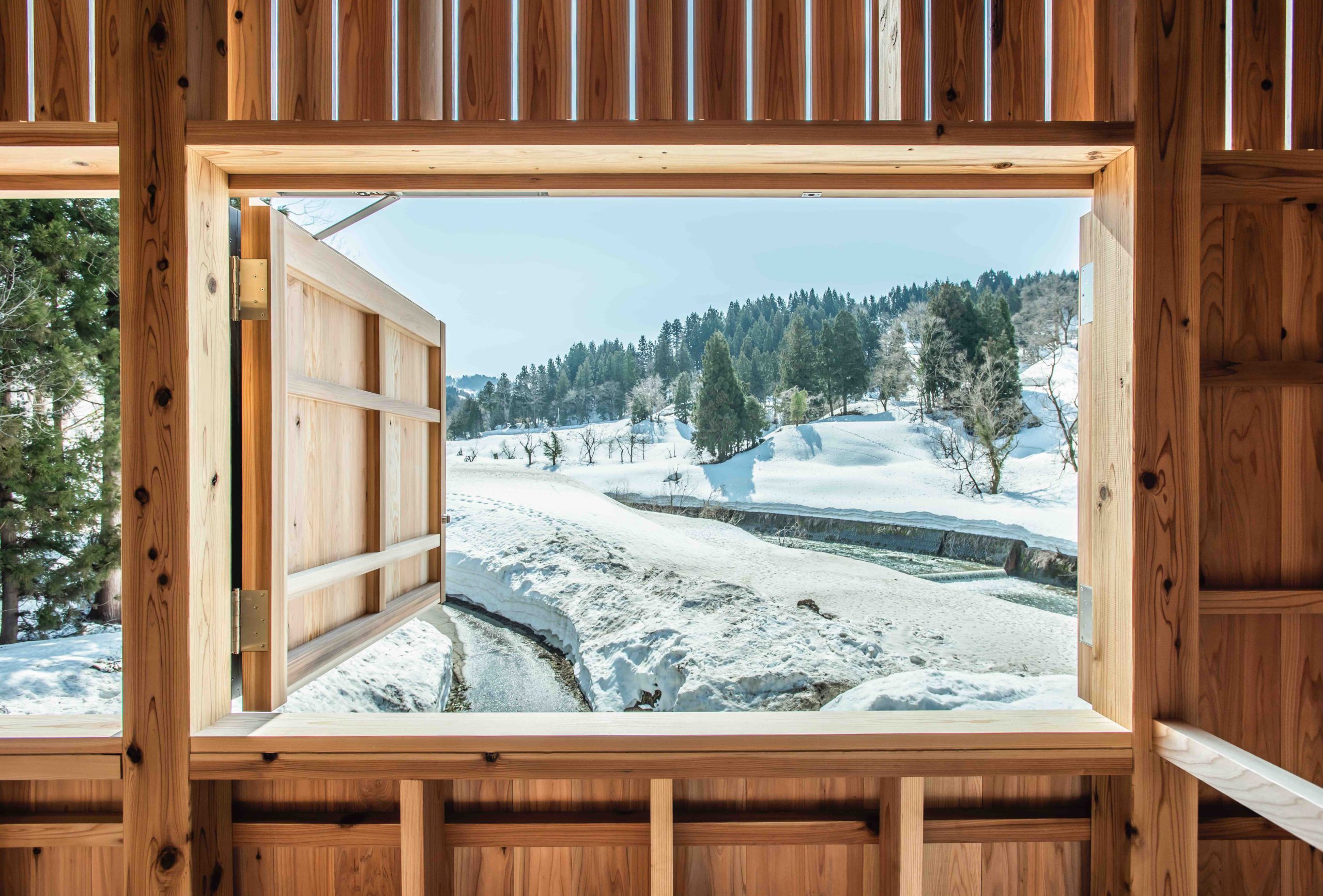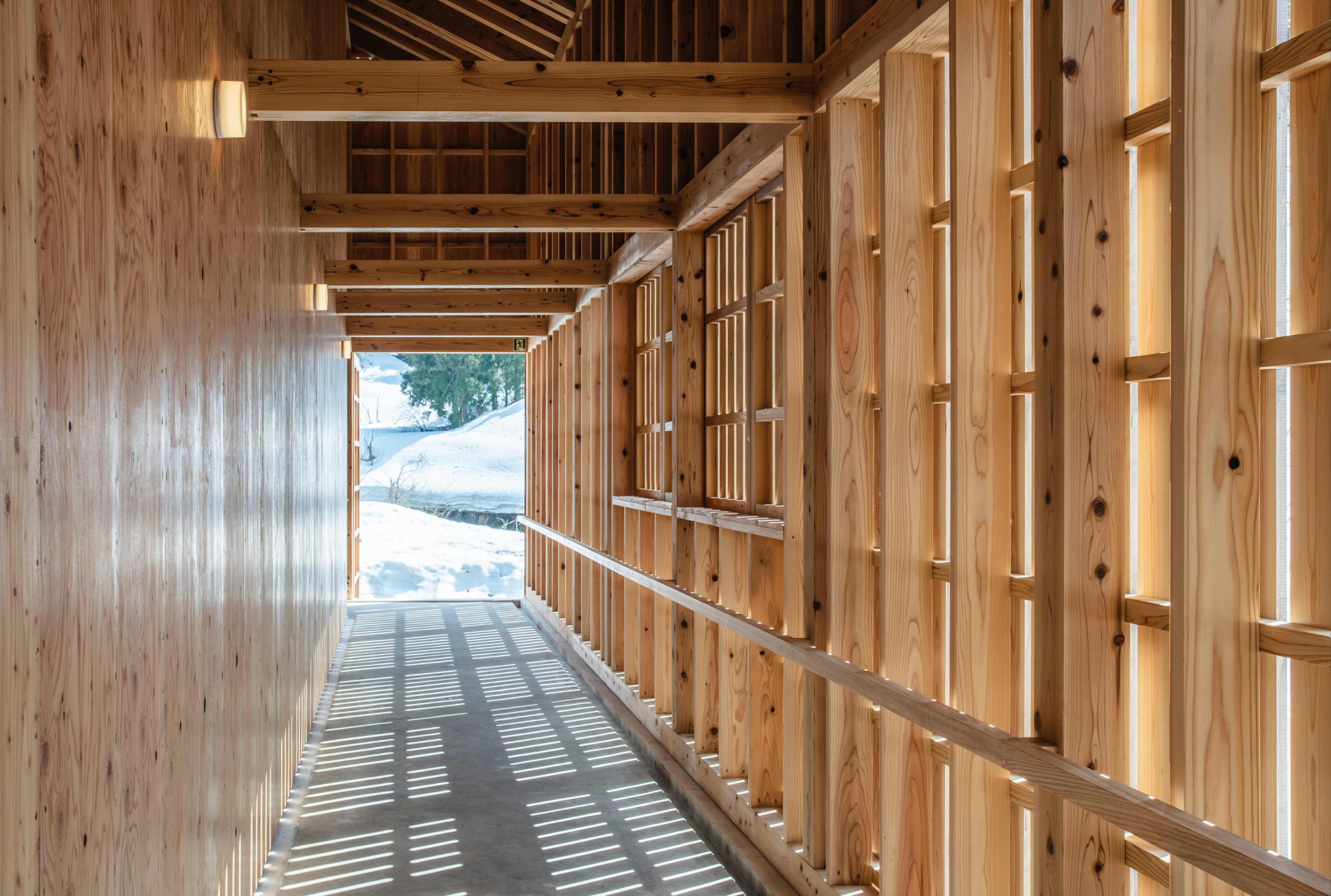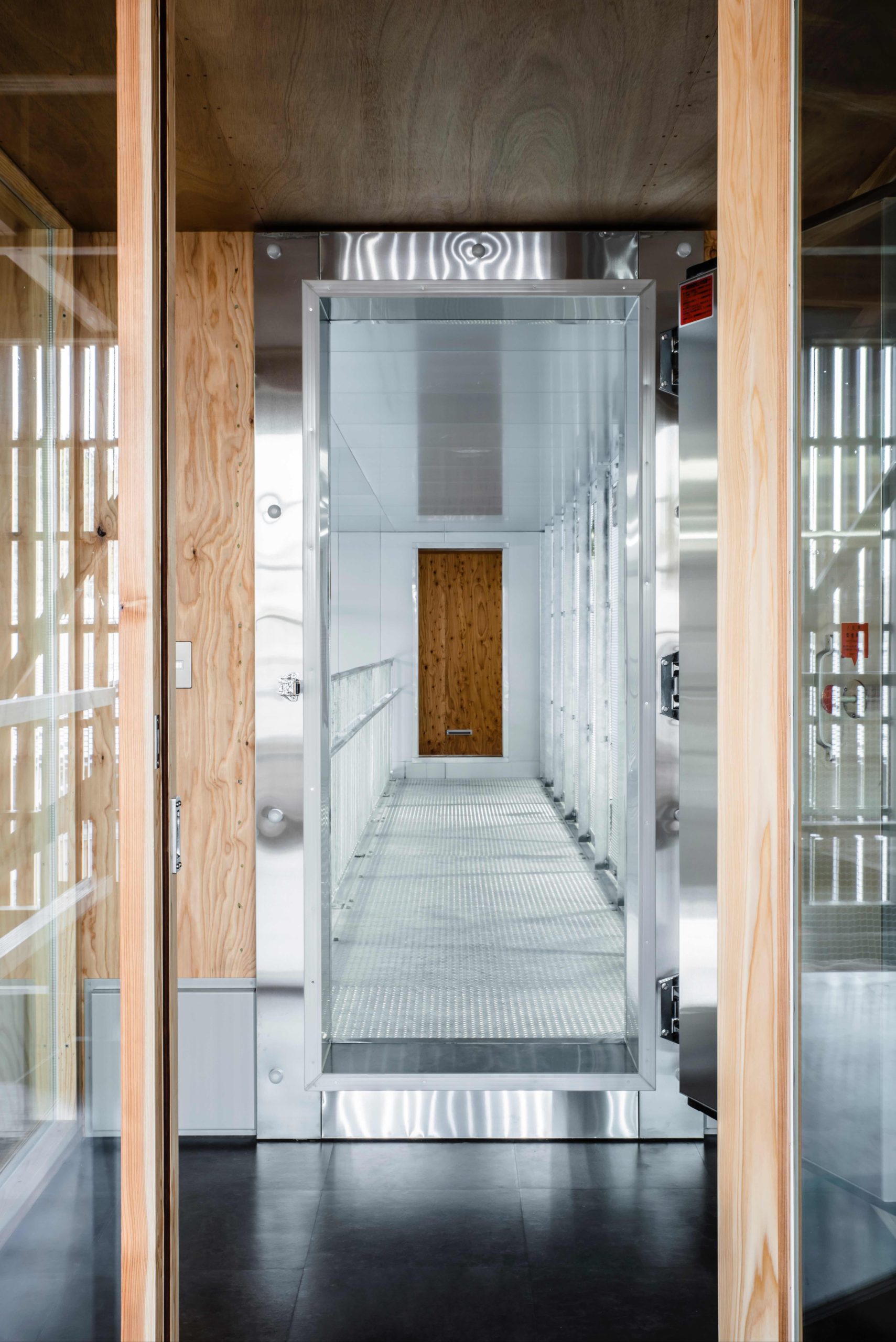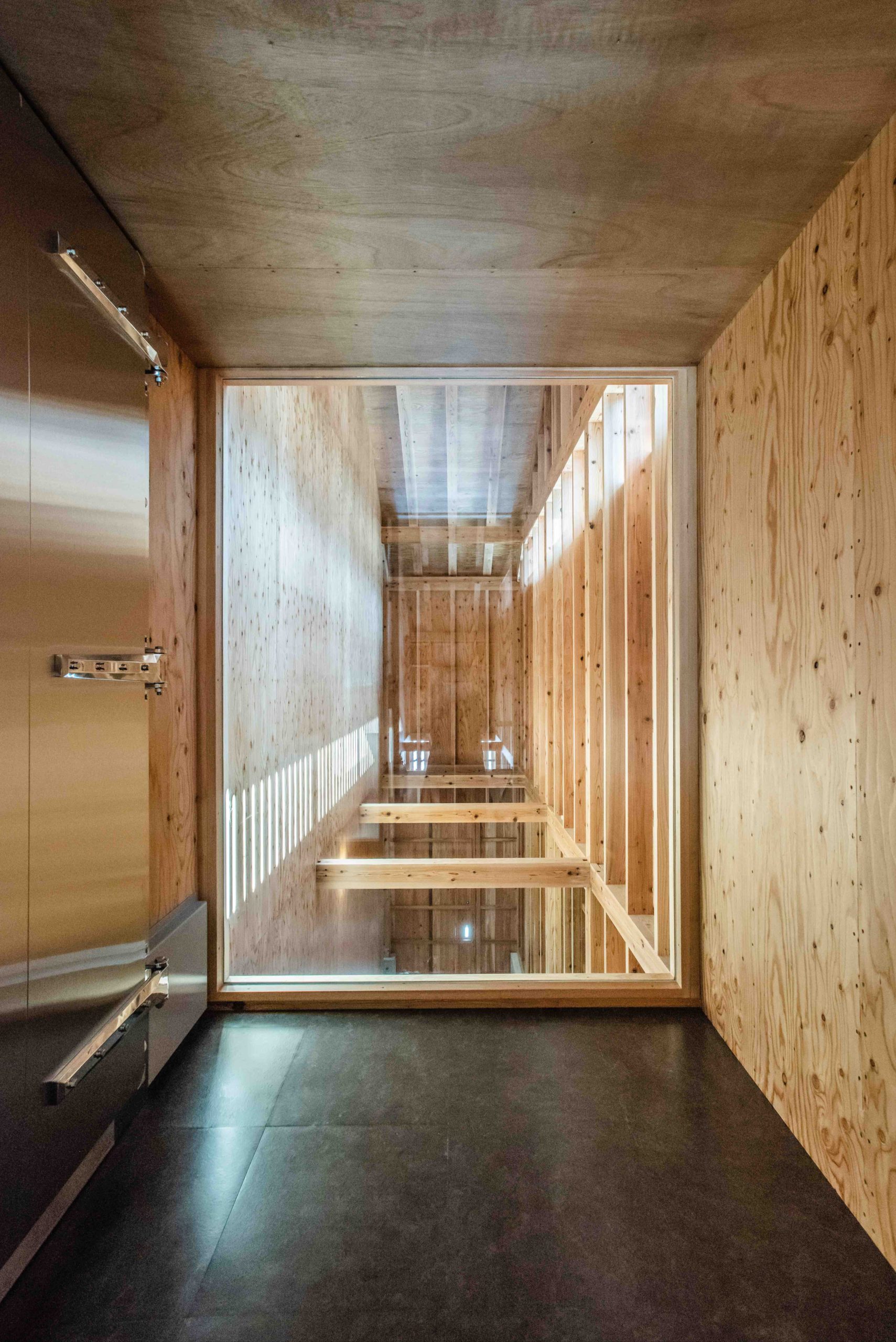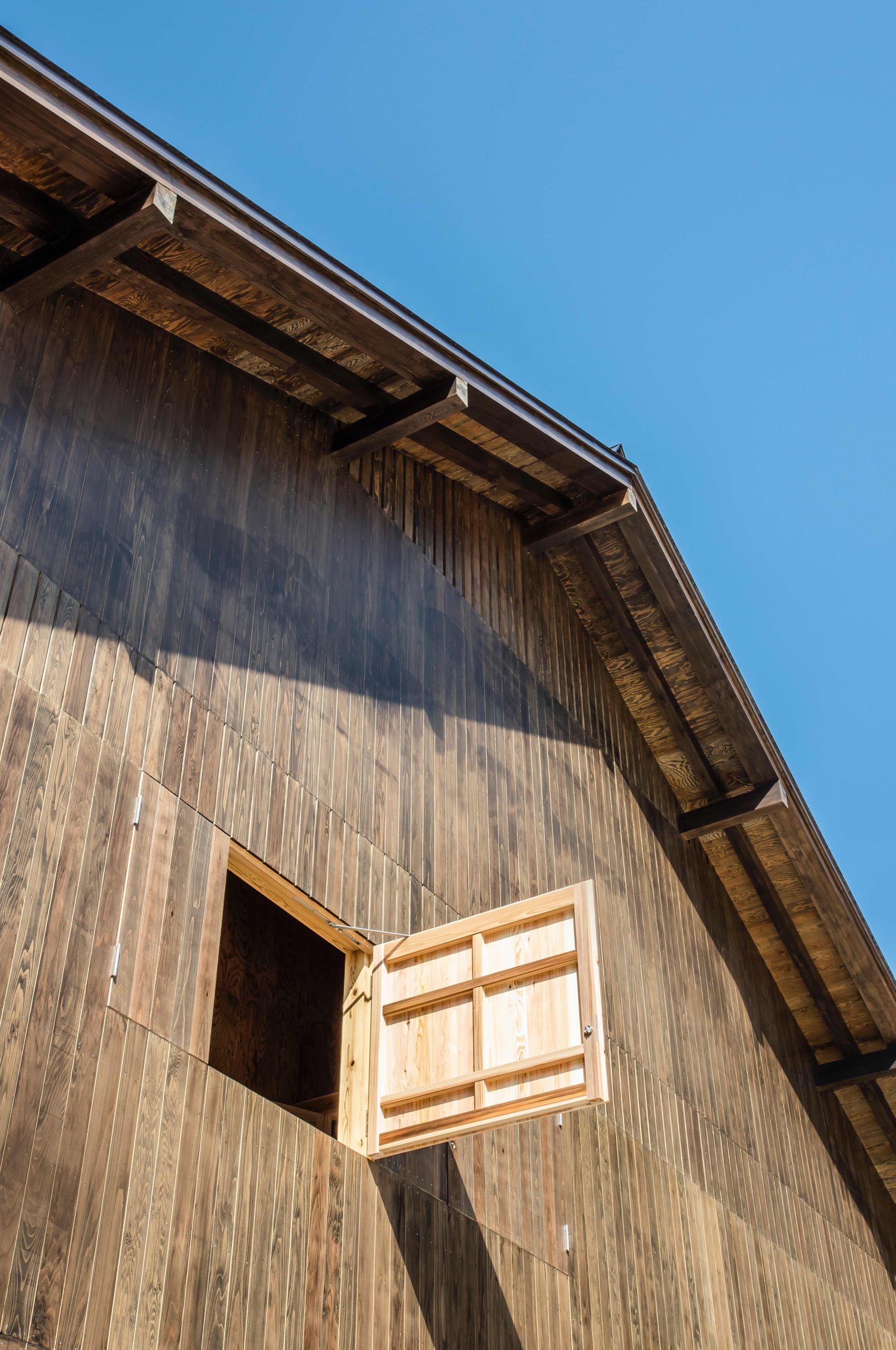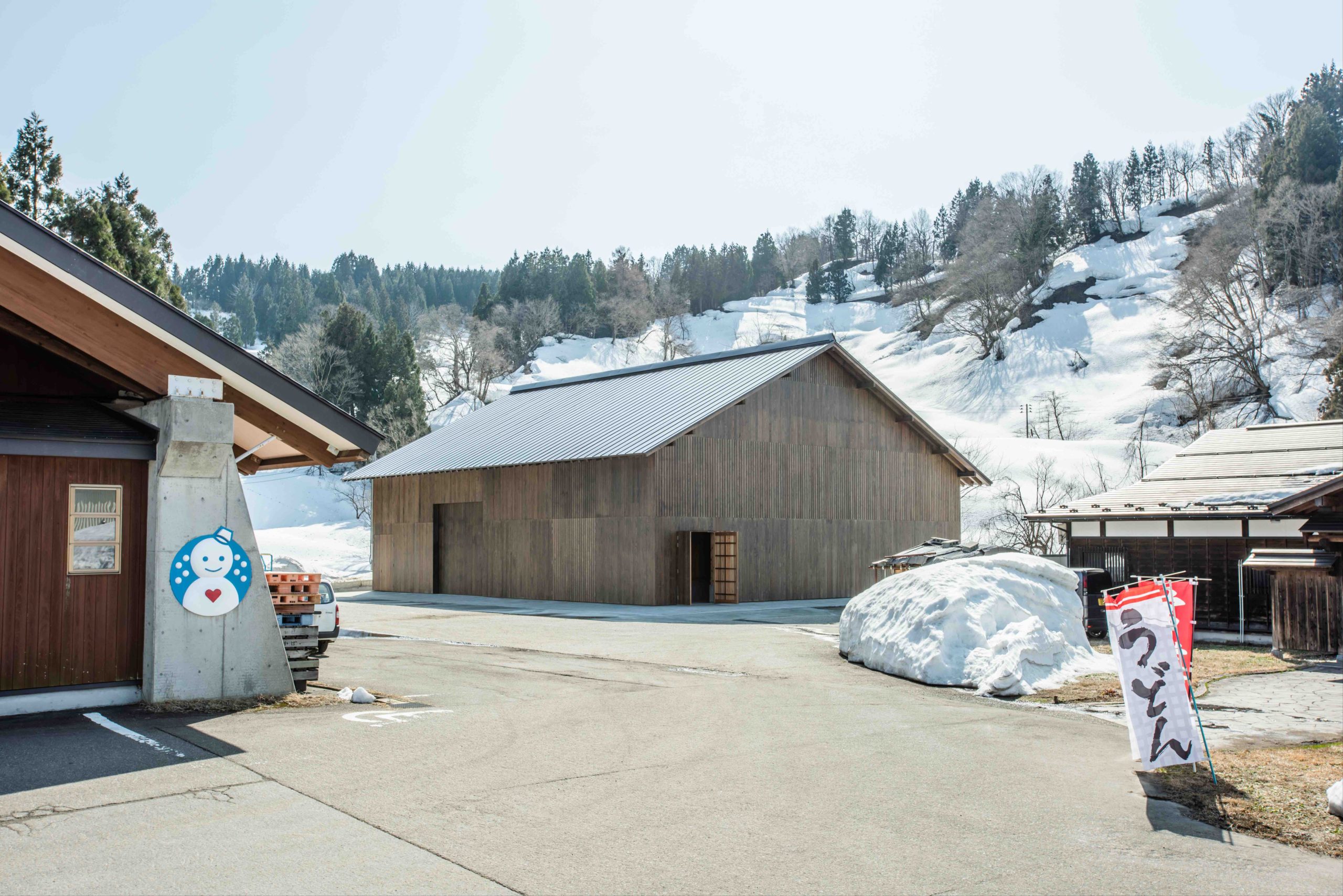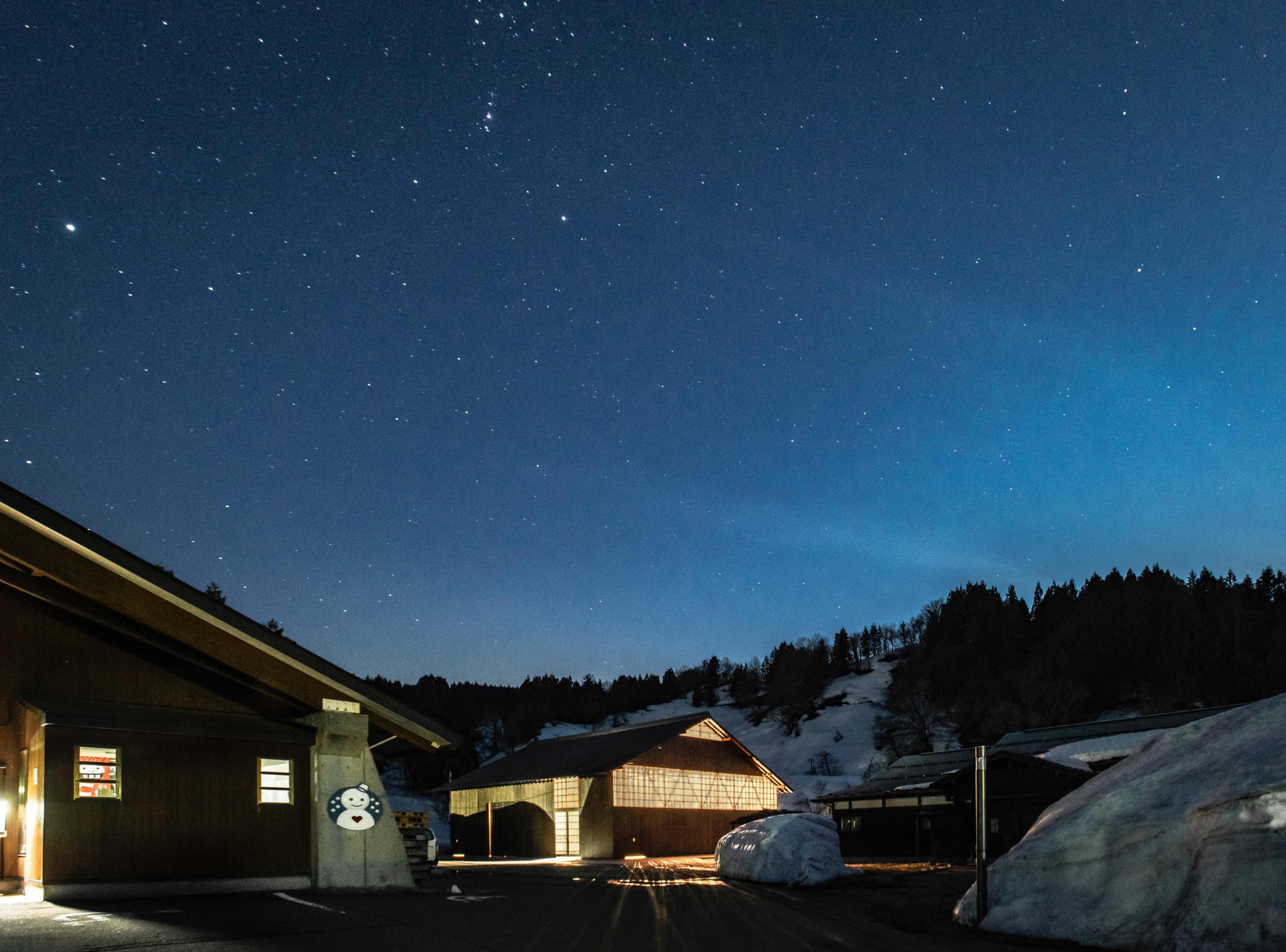/上越市雪中貯蔵施設 ユキノハコ 2021
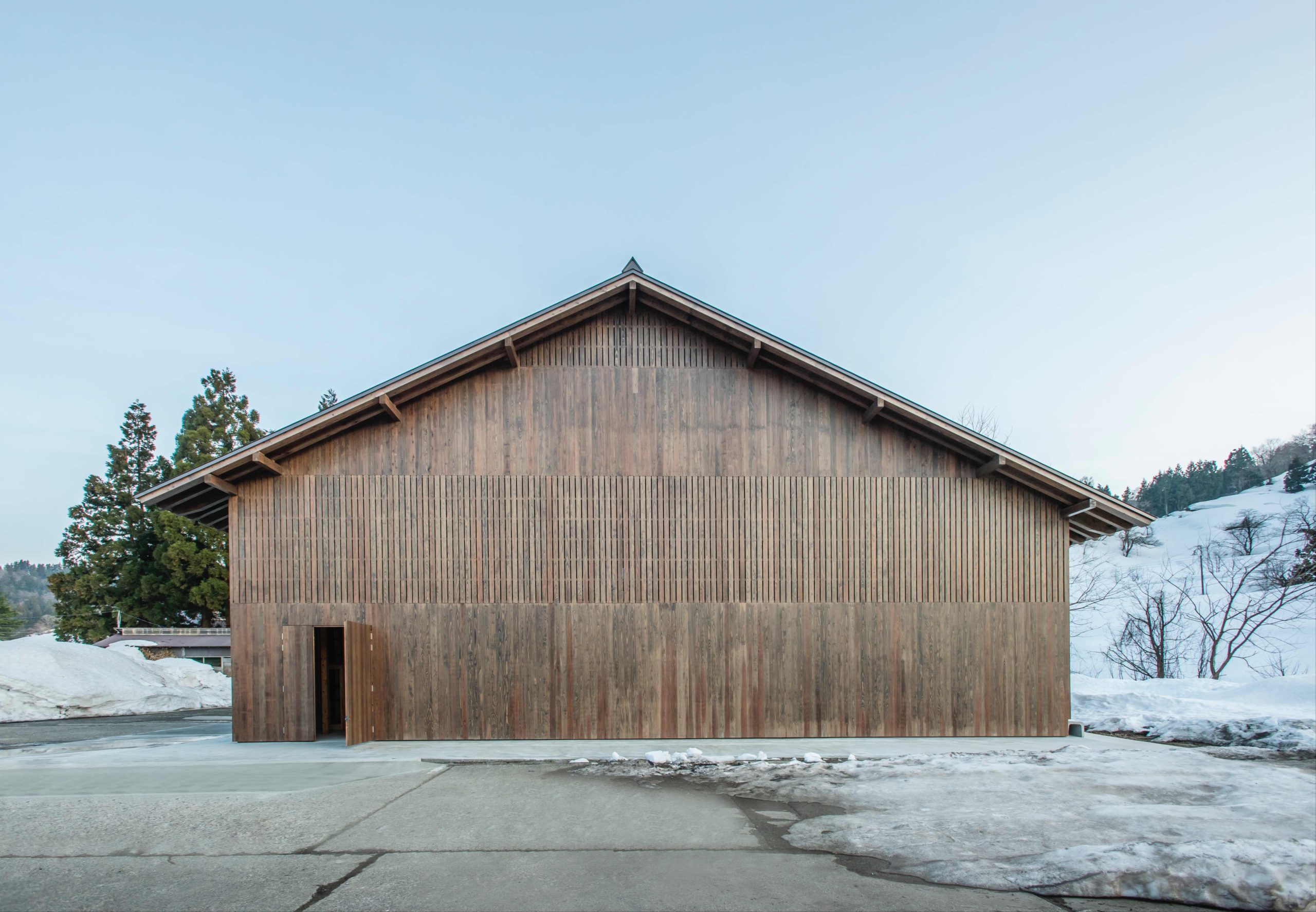
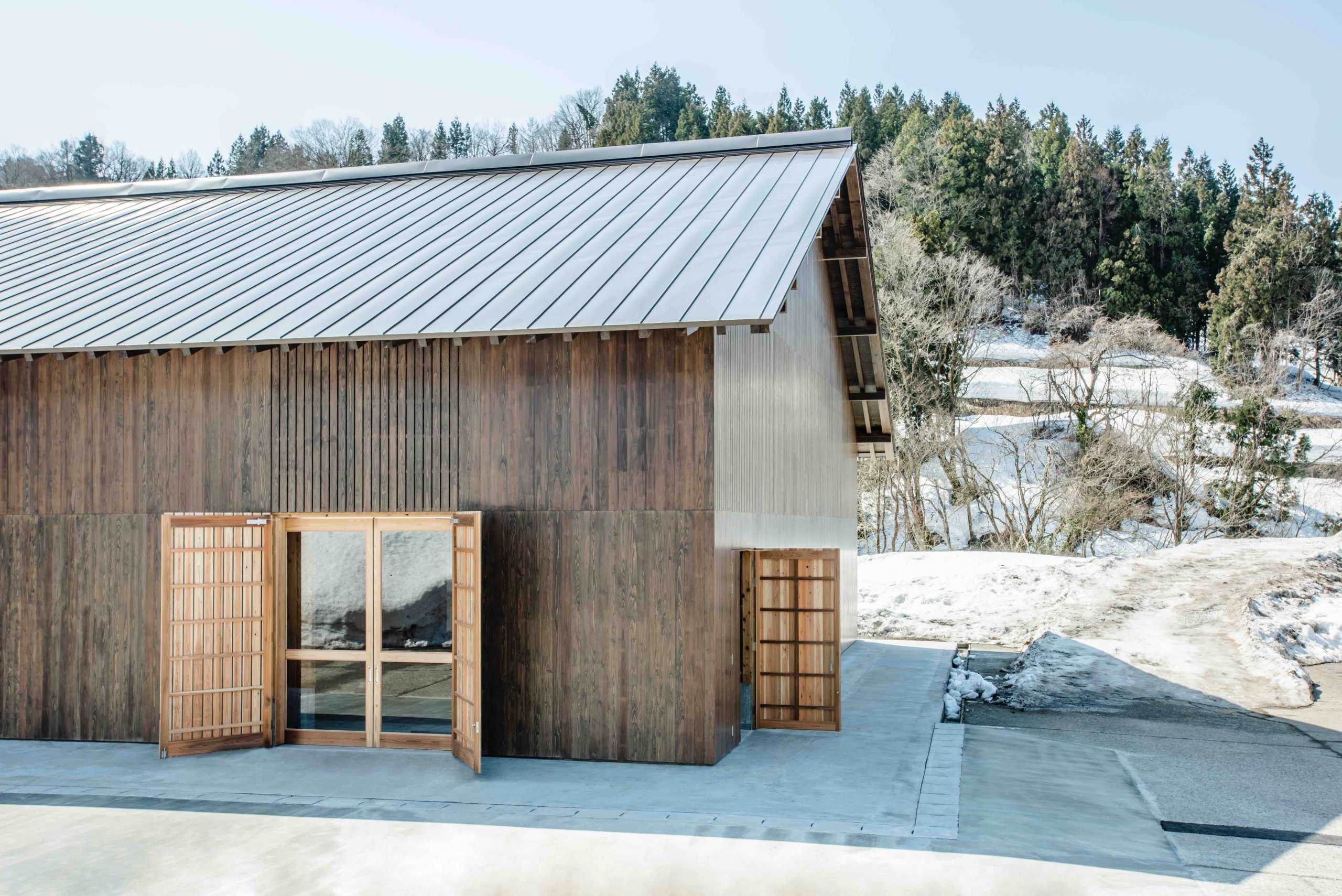
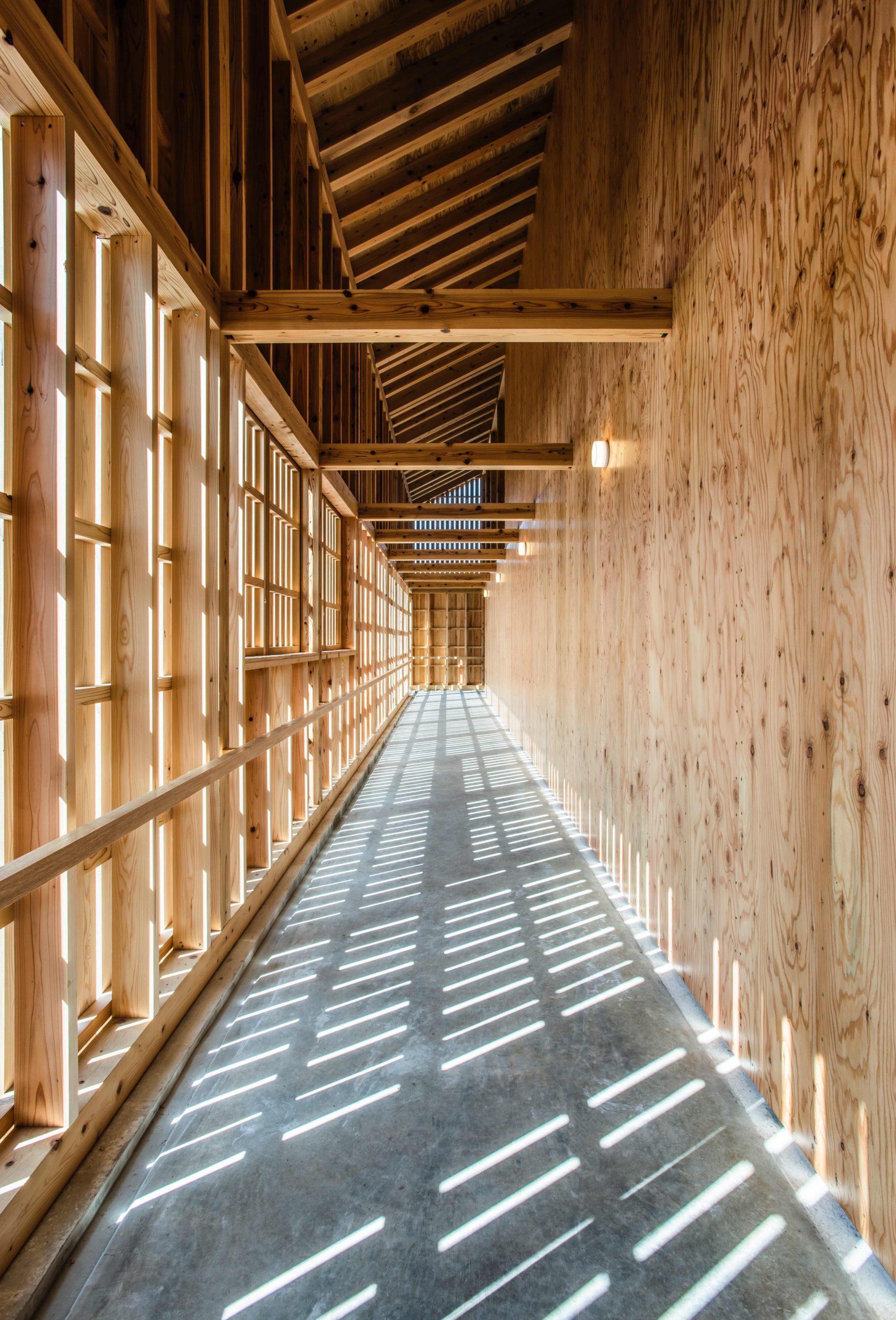
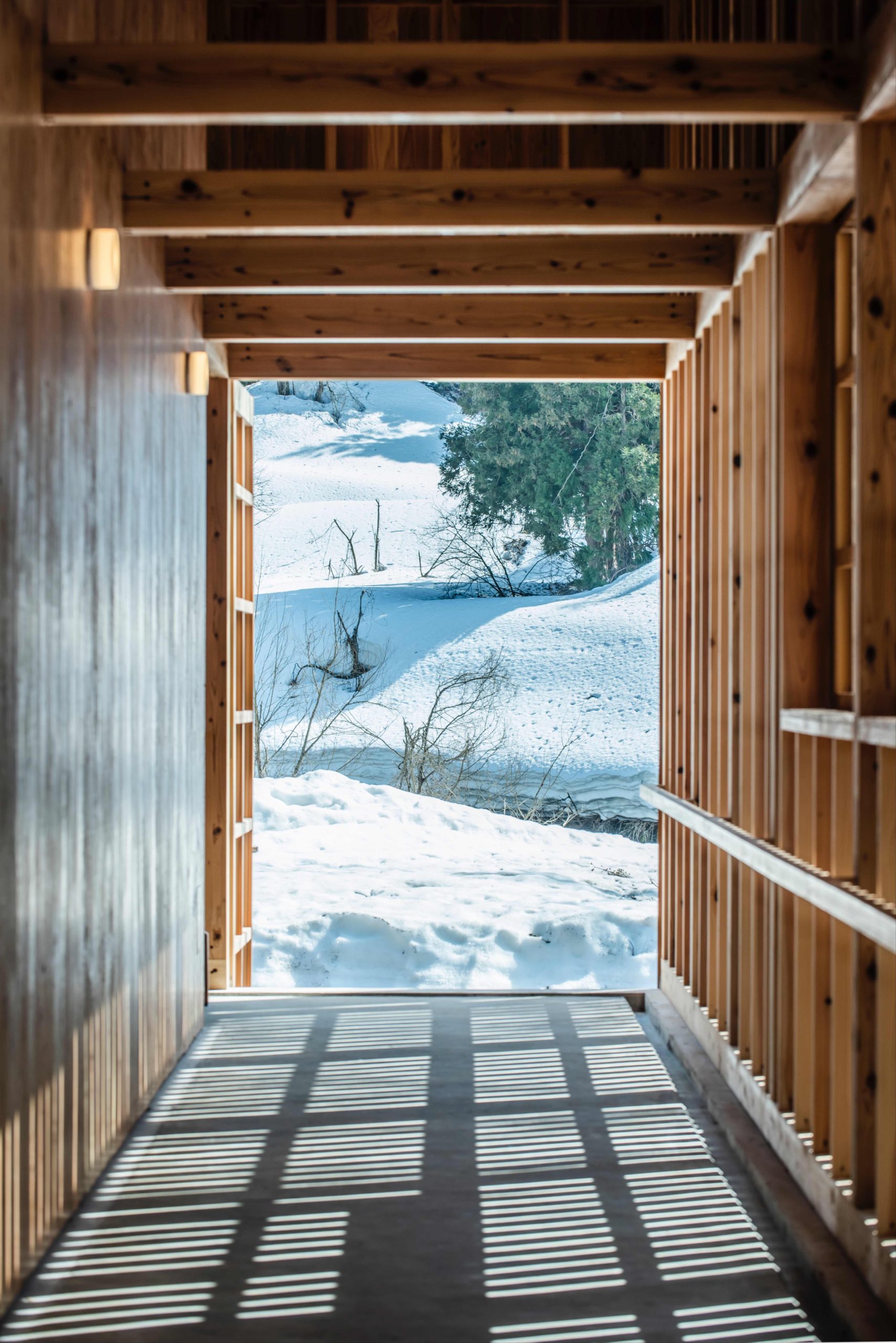
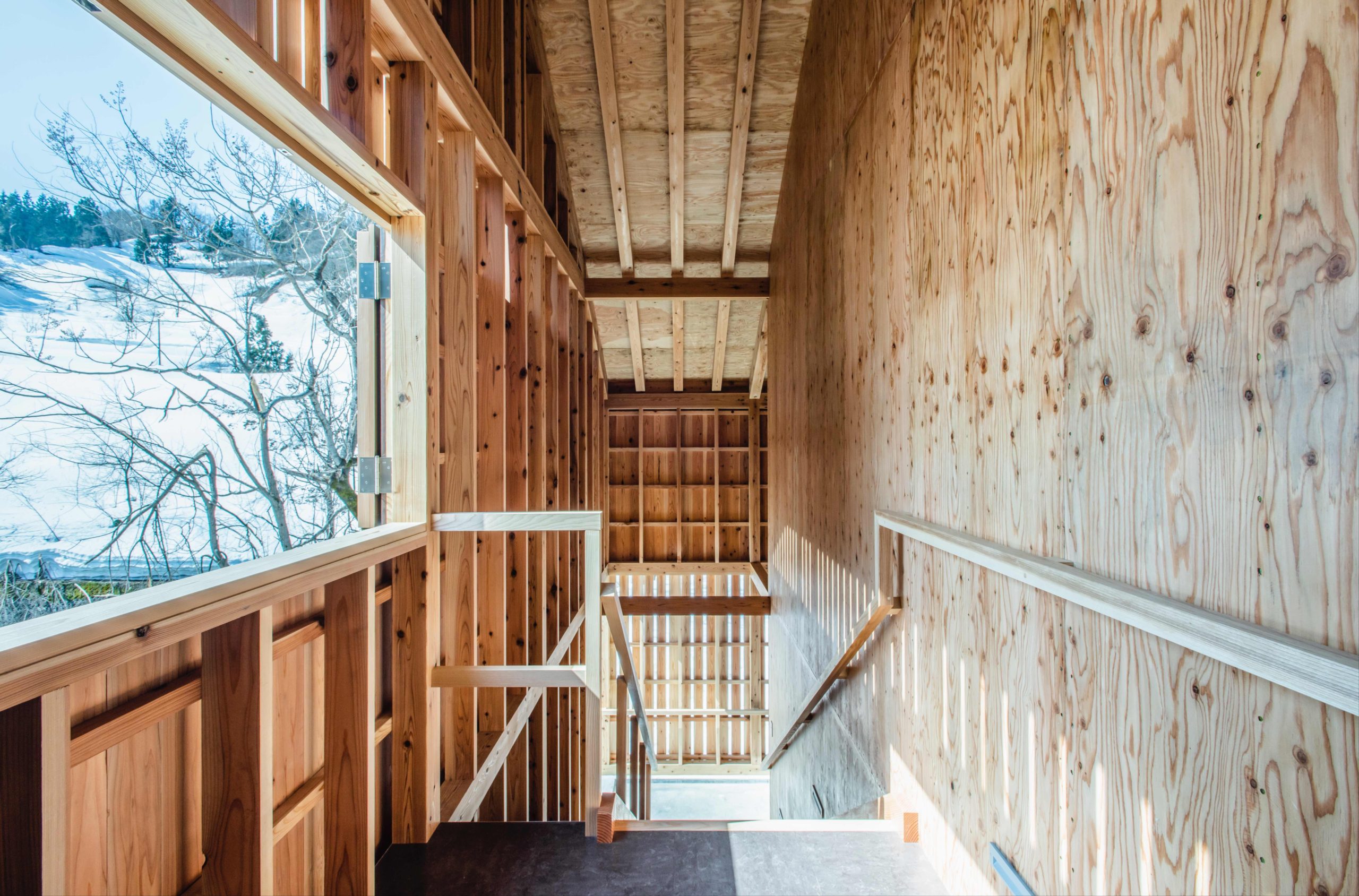
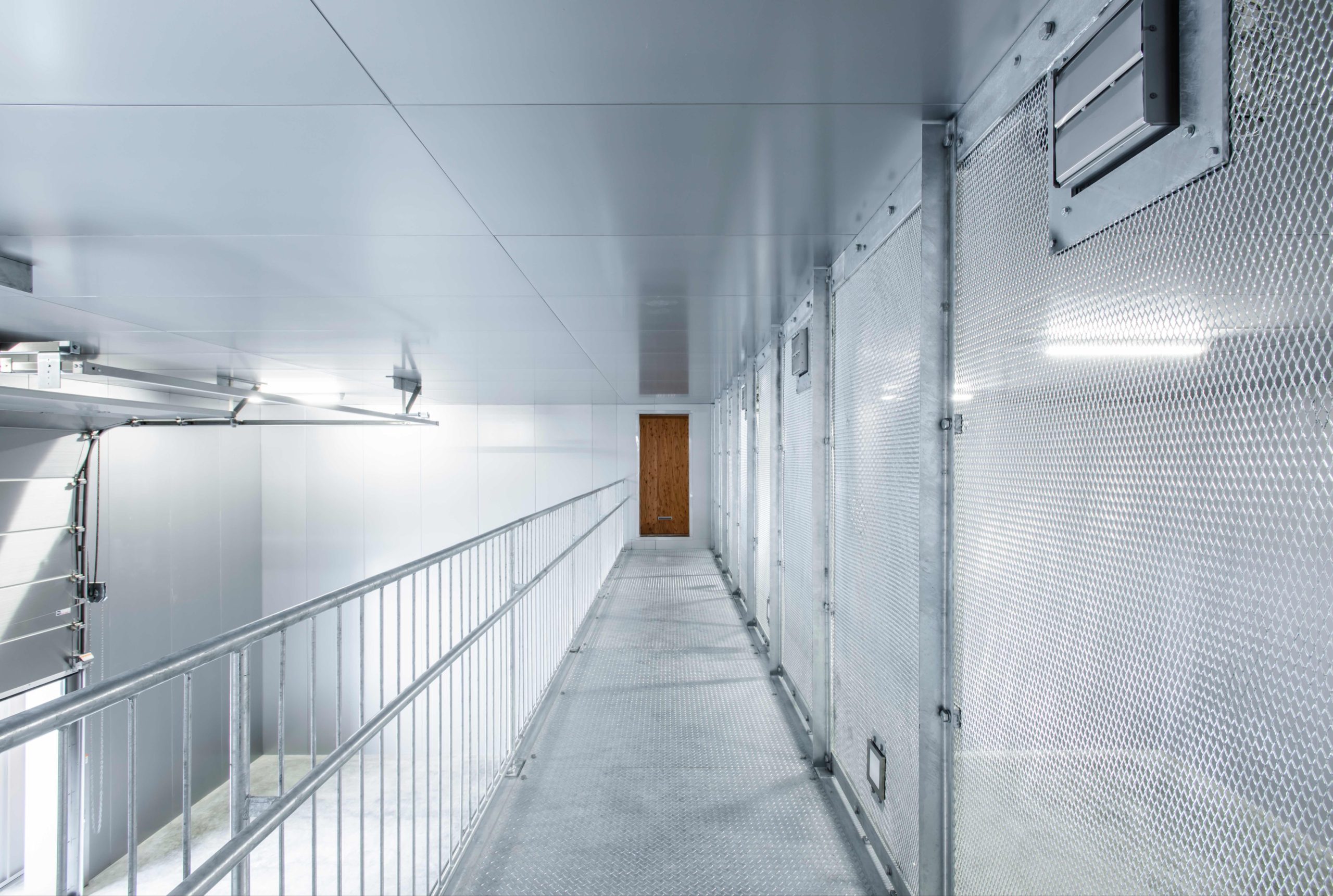
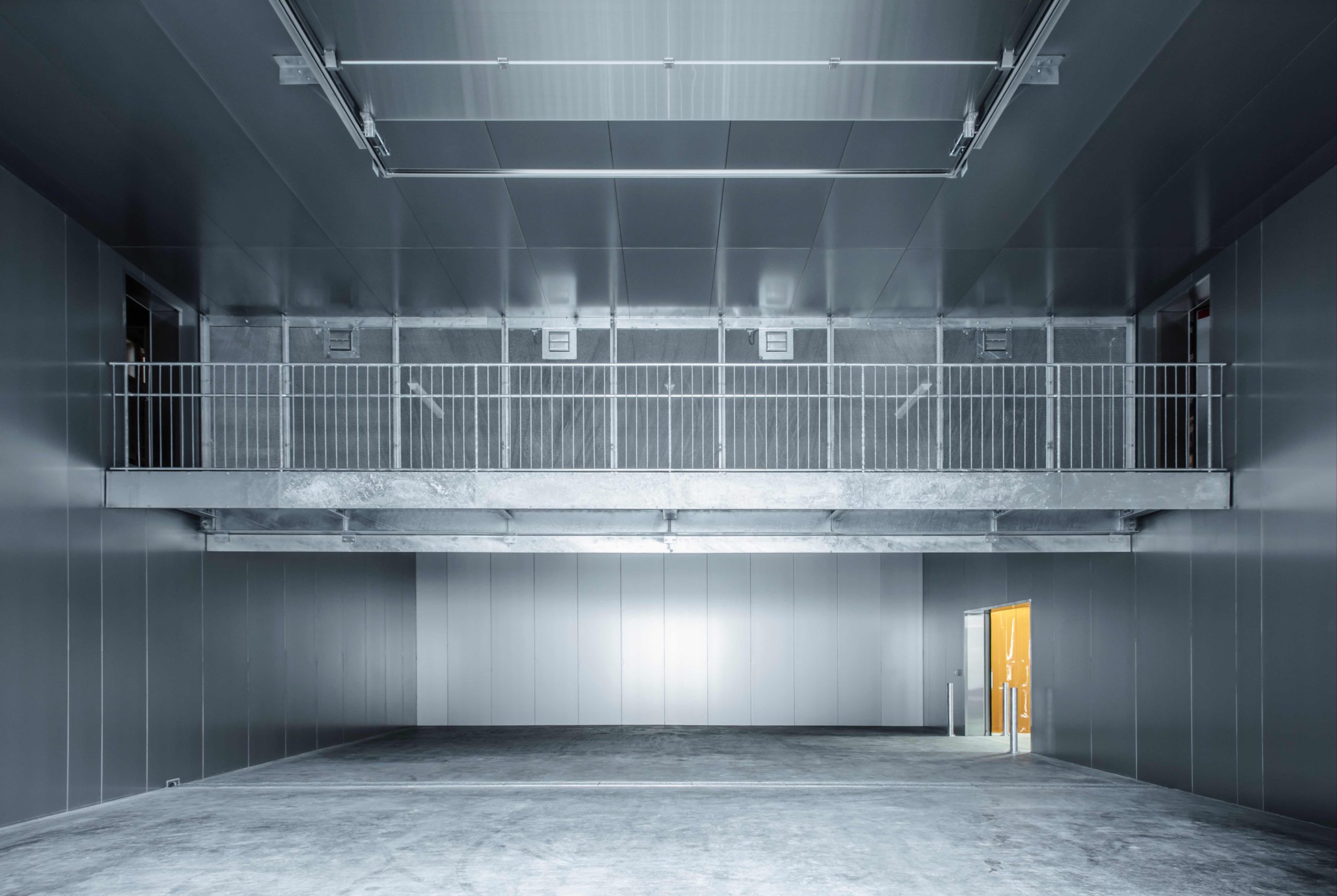
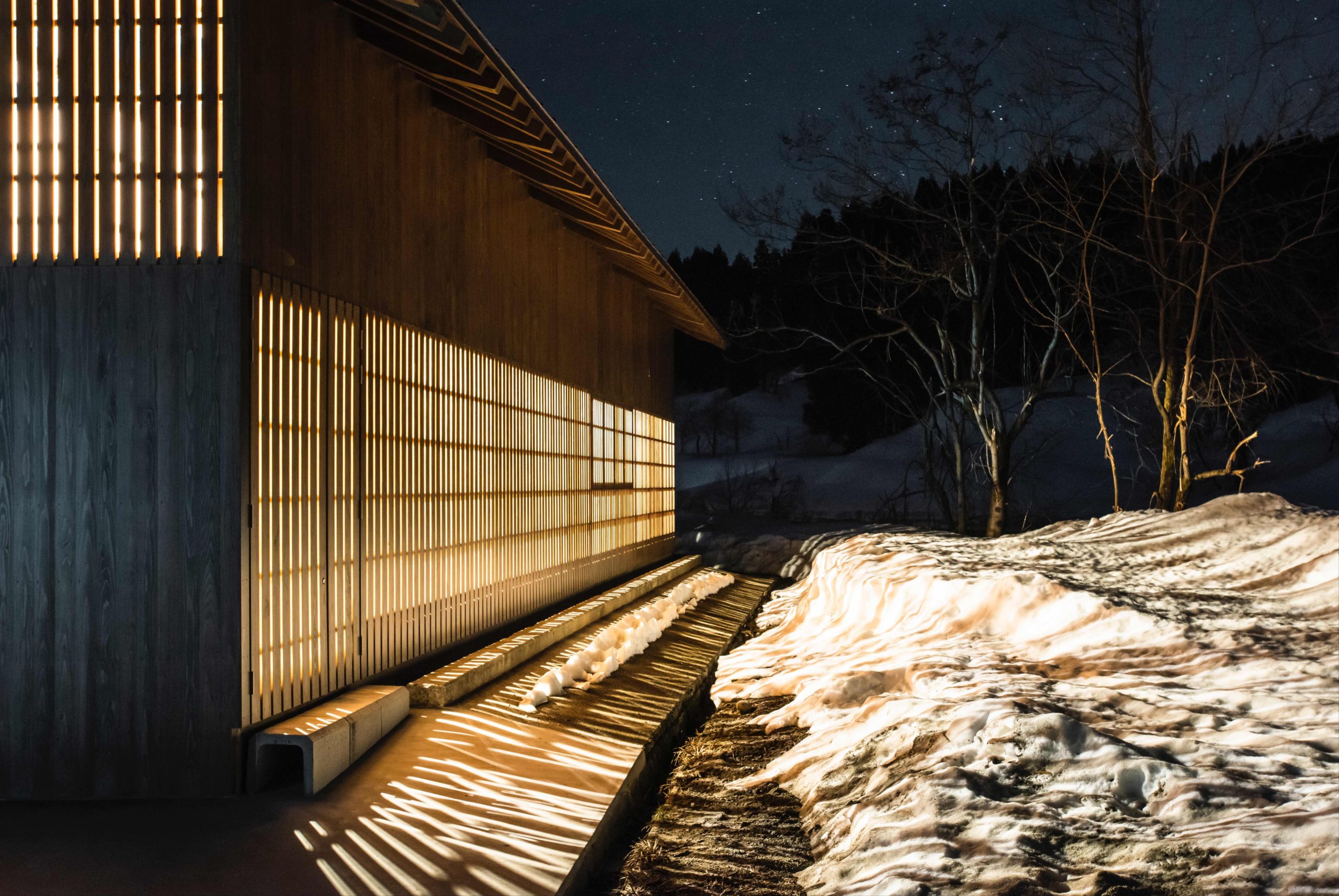
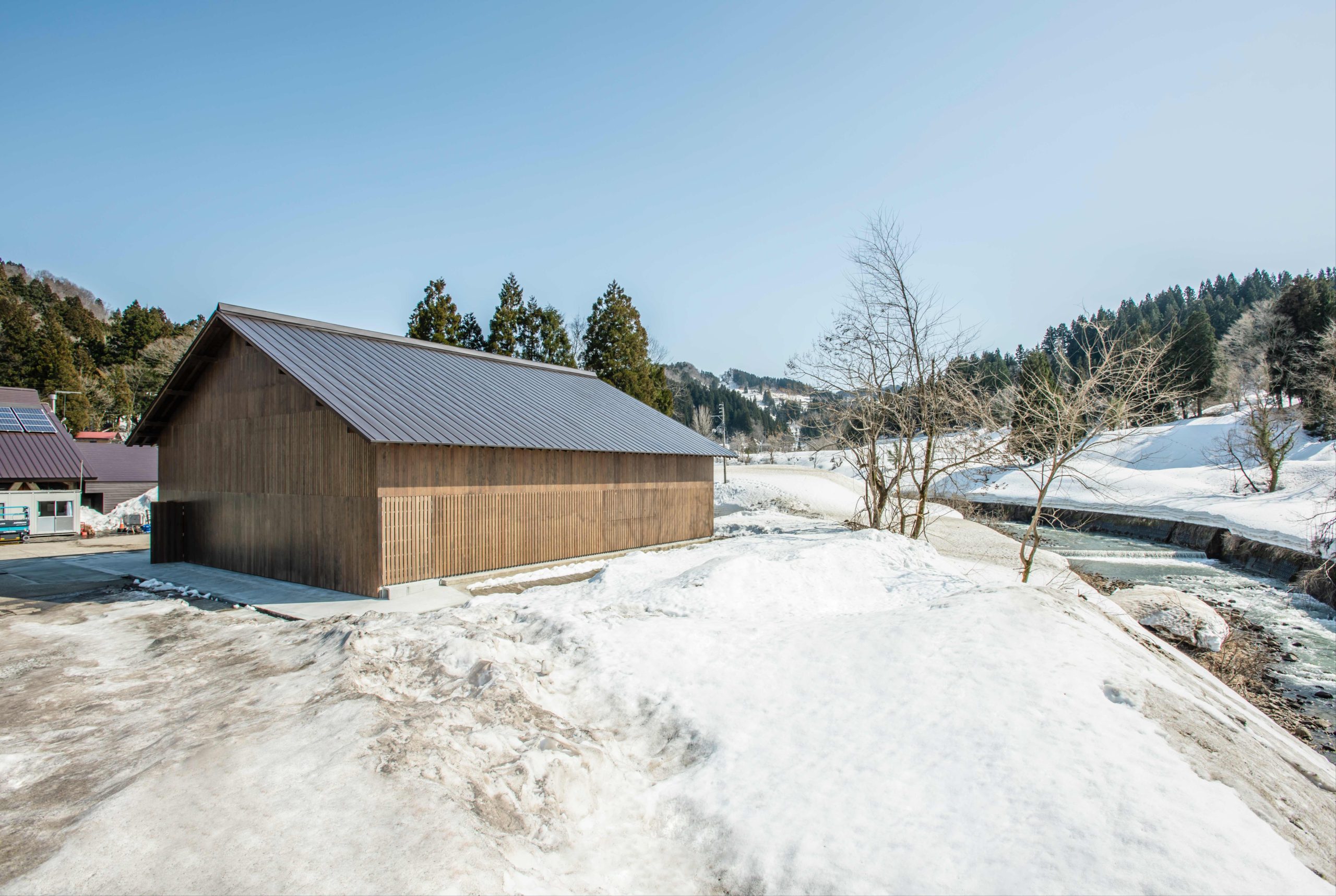
重なり合うサイクルを形成する
新潟県上越市の安塚という小さな町に建てられた木造の雪貯蔵庫です。雪の冷熱を利用した天然の冷蔵庫で、今回は近所で収穫されたお米が貯蔵されます。中山間地の棚田では、農家の高齢化や後継者不足に加え、一般的に平野部の農家に比べて生産性が低く、所得が低い傾向にあります。クライアントである上越市は、この状況を改善することを目的としています。
貯雪庫内は常に湿度が高く、雪圧で建物が傷む可能性があるため、通常は鉄筋コンクリート造を選択するが、今回は木造建築として、地域の林業と雪の持続可能な関係を見直すことが目的だった。安価な雪室が実現できれば、農家は新築でも改築でも気軽に雪室を作ることができ、除雪や征圧よりも雪利用の機運が高まり、雪のエネルギー利用が促進される。
雪置き場の外周に半屋外通路を設け、周囲の魅力を感じられるようにしました。例えば、外壁の一部に透かしを入れ、冬場は雪捨て場となる場所で、小黒川の音や鳥のさえずりを聞くことができるようにしました。地域住民に対しては、日常の風景を印象的に捉えられるような開口部を配置した。雪国での農業に誇りを持てるような場所を目指した。回廊の外壁はダブルスキンとし、日射が貯雪庫を囲む断熱壁に届かないようにすることで環境負荷を低減すると同時に、冬の雪囲いとしての役割も果たしています。回廊の長柱を補助梁で分割して組柱とし、大断面の集成材ではなく小径の地杉材を用いた在来工法で、雪貯蔵庫に必要なスパンと天端高を確保した。
雪、人、米、木、風、熱など、さまざまなスケールと特性を持つ「循環」が重なり合い、その循環の一部を補完し、あるいは循環の接点をより良くすることで、重なり合った風景を雪室という建物に形作っています。
Forming the Overlapping Cycles
This is a wooden snow storage built in a small town called Yasuzuka in Joetsu City, Niigata Prefecture. The snow storage is a natural refrigerator that utilizes the cold heat of the snow, and this time, rice harvested in the neighborhood will be stored. In addition to the aging of farmers and the lack of successors, farmers in terraced rice paddies in mountainous areas generally have less productivity than farmers on the plain, and tend to have lower incomes. The client Joetsu City aims to improve this situation.
Since the humidity inside the snow storage is always high and the building may be damaged by snow pressure, reinforced concrete construction is usually chosen, but this time, as a wooden structure, the aim was to rethink the sustainable relationship between the local forestry industry and snow. If inexpensive snow storage can be realized, farmers will be able to build snow storages easily, whether newly constructed or renovated, and this will increase the momentum for snow utilization rather than snow removal and snow conquering, and promote the use of snow energy. A snow storage is a building that must be closed to the outside due to its performance. This time, a semi-outdoor corridor was built around the perimeter of the snow storage so that visitors can feel the charm of its surroundings. For example, a portion of the exterior wall is watermarked to allow visitors to hear the sound of the Oguro River and birdsong in an area that is used as a snow disposal site in the winter. For the local residents, openings were placed to capture the scenery of their daily lives in an impressive manner. The aim was to create a place where farmers can take pride in farming in a snow country. The exterior walls of the corridor are double-skinned to reduce environmental impact by preventing solar radiation from reaching the insulated walls surrounding the snow storage, while at the same time serving as a winter snow fence. The long pillars of the corridor are divided by auxiliary beams to form braided pillars, and the span and top height required for the snow storage were secured by conventional construction methods using small-diameter local cedar timbers instead of large-section laminated timbers.
“Circulation” with various scales and characteristics such as snow, people, rice, trees, wind, heat, etc. overlap.The overlapping landscape is shaped into a building called a snow storage by complementing some of these circulations or finding better points of contact of these circulations.
所在地:新潟県上越市安塚区樽田
主要用途:保冷倉庫
建築面積:356㎡
延床面積:458㎡
構造:木造2階建 在来軸組工法
規模:地上2階
構造:平岩構造計画
設備:環境エンジニアリング
アートディレクション:井上さなえ
技術支援:雪だるま財団
施工:サトウ産業
写真:soichiro suizu

